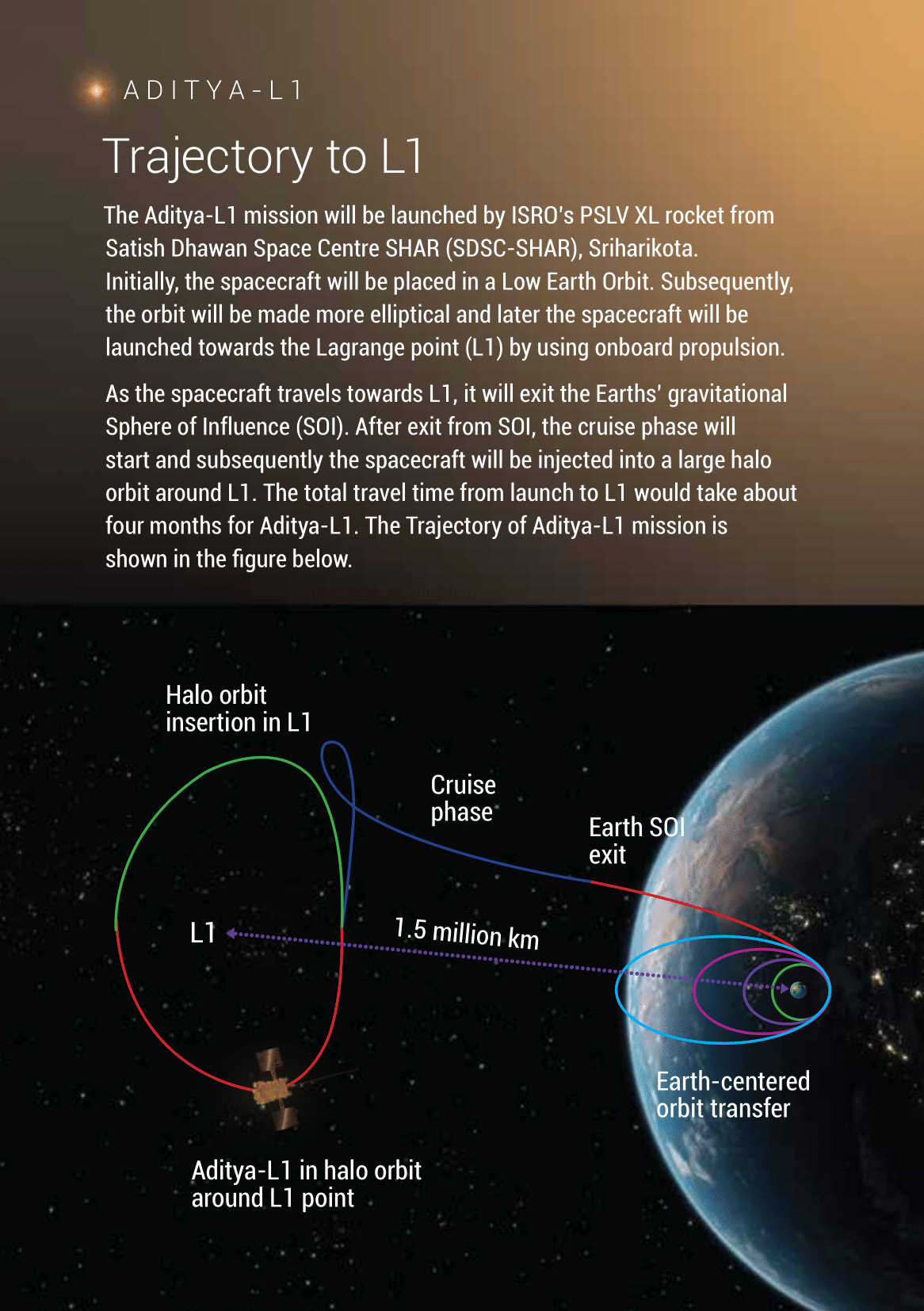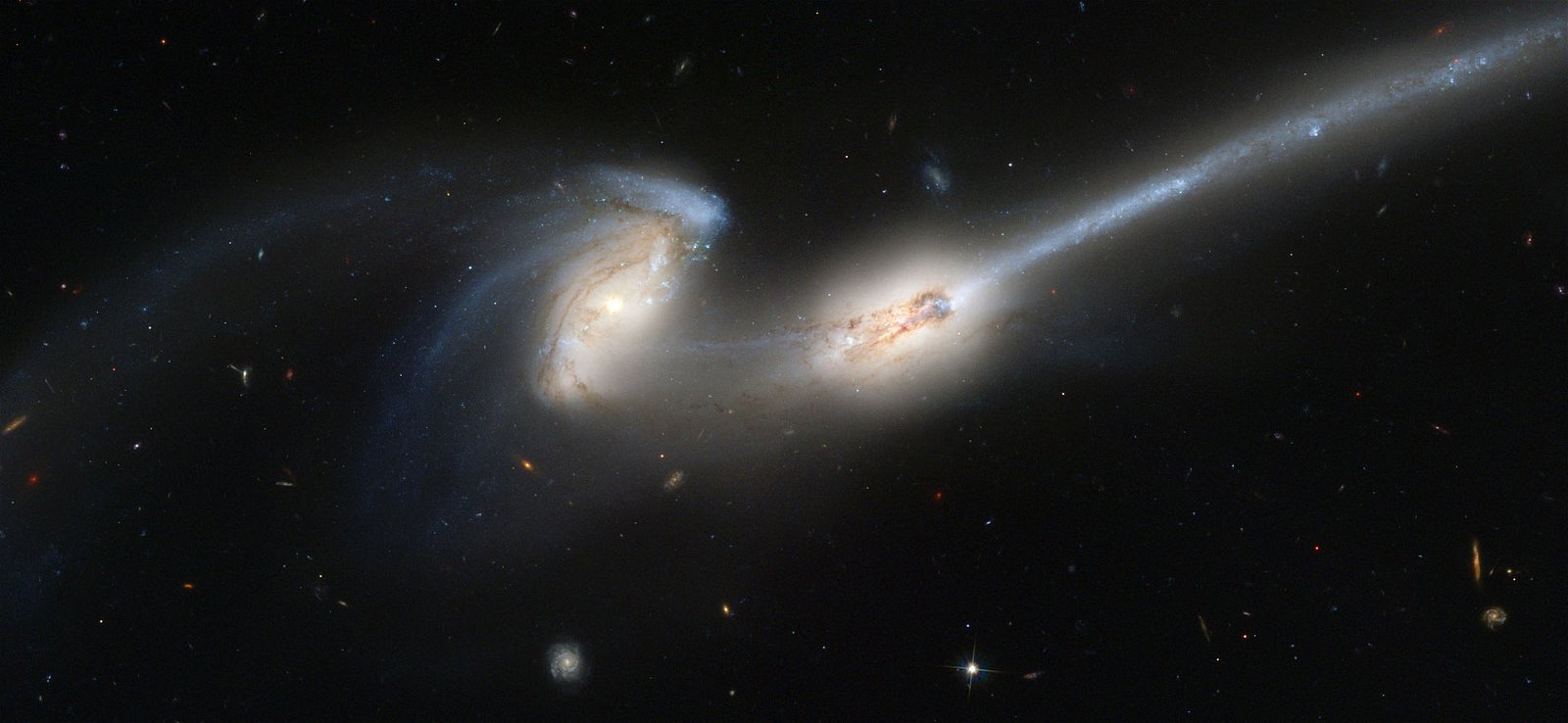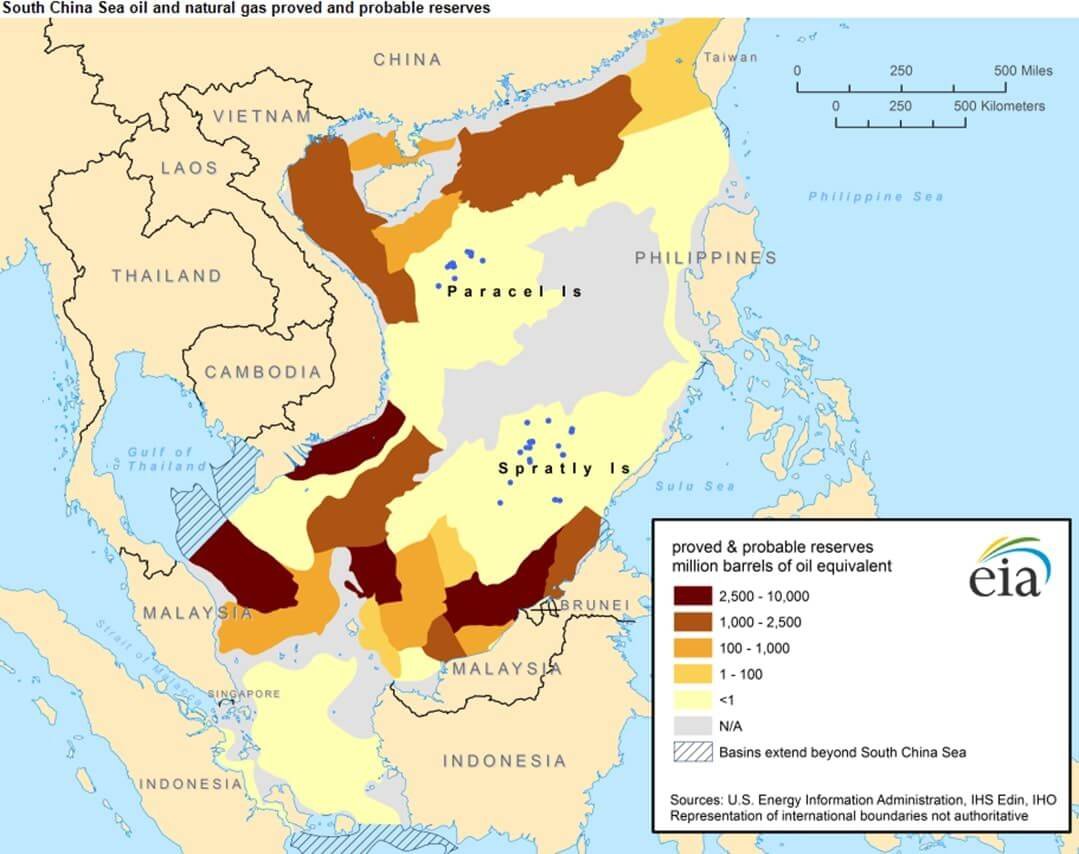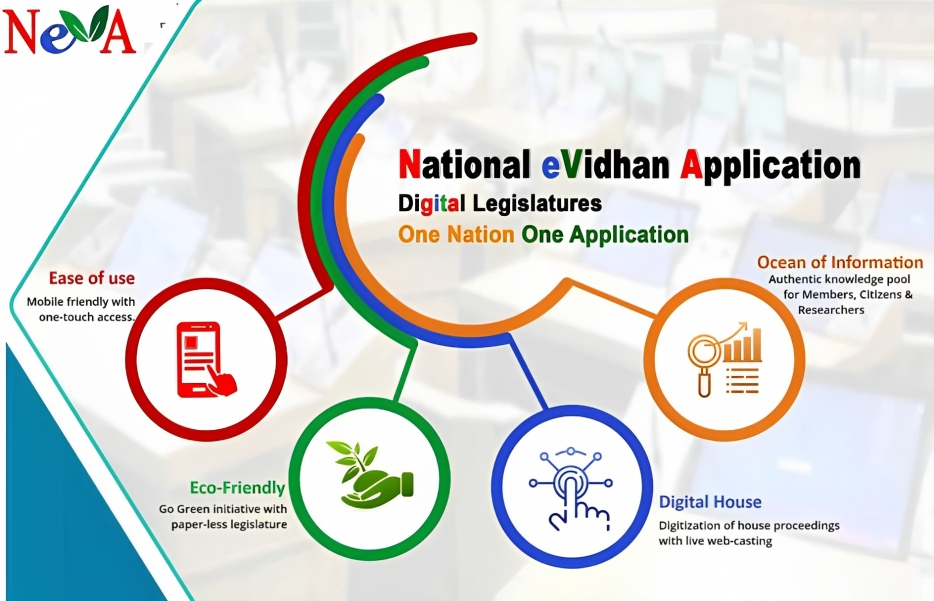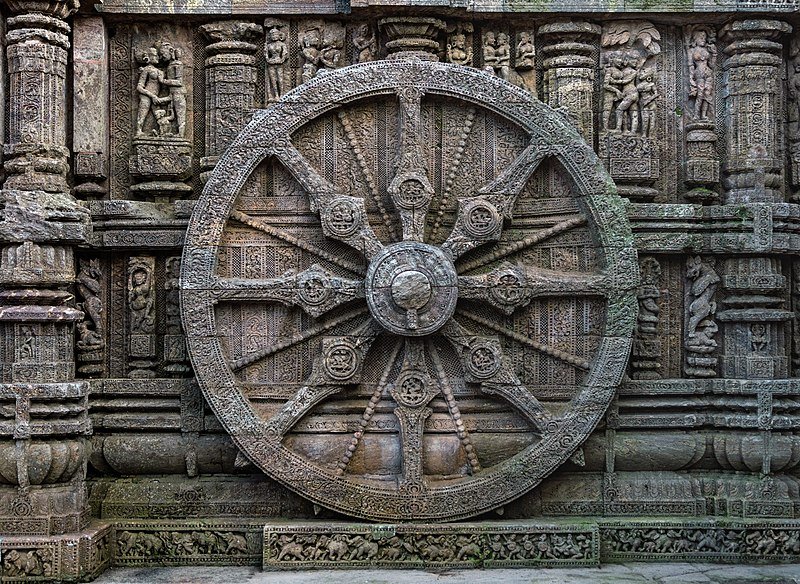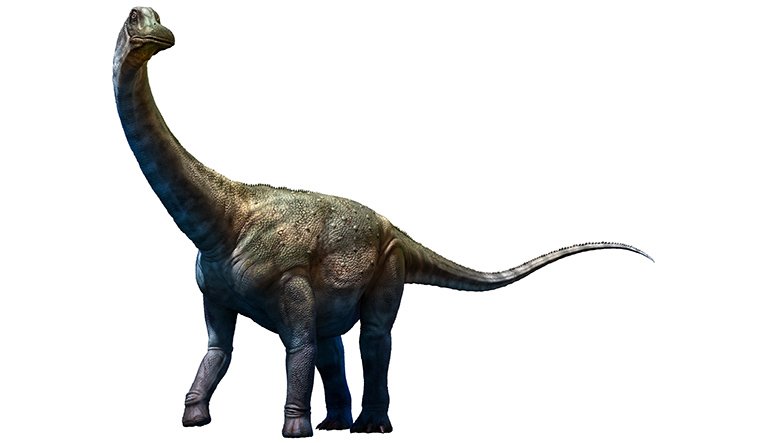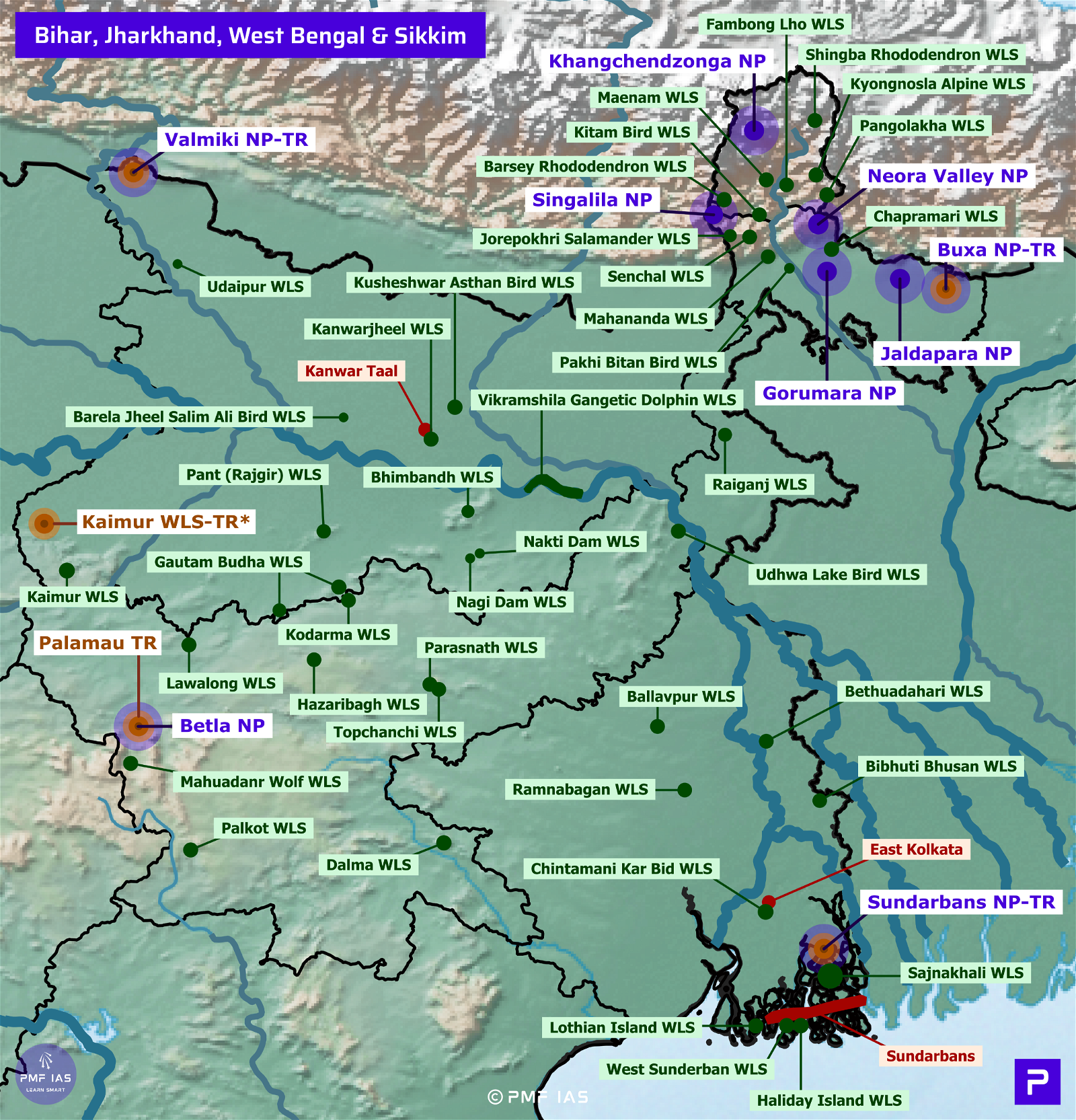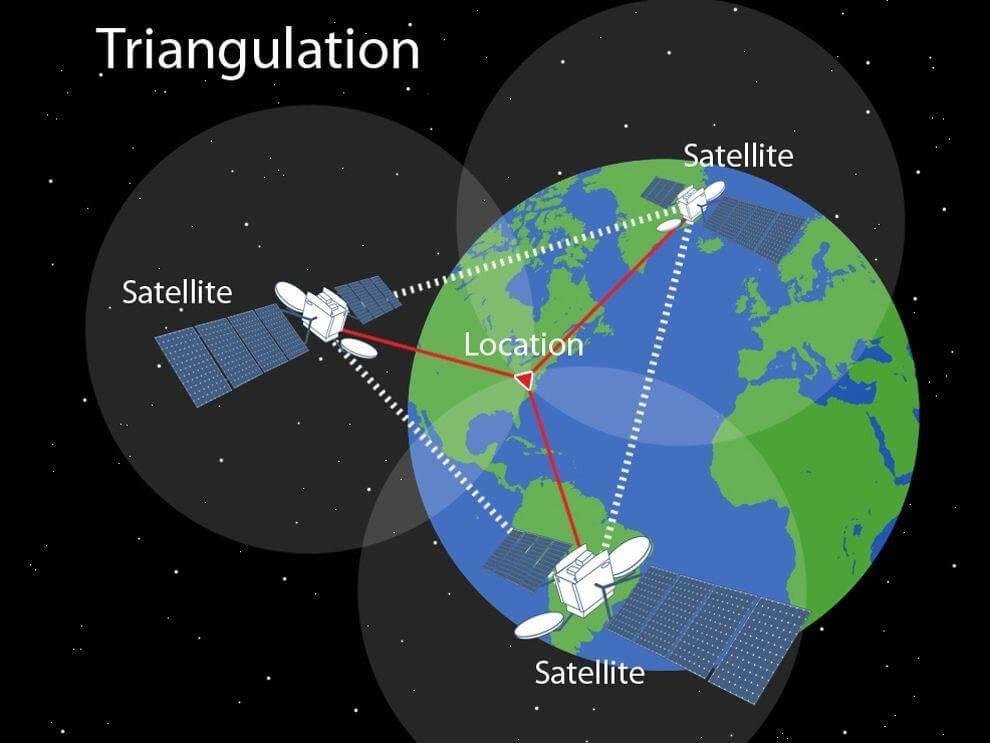
Current Affairs September 05, 2023: OBC Reservation, Global Hunger Index, Autonomous District Councils, RTI Act, Hydroponics, Satan II Missile
Subscribers of "Current Affairs" course can Download Daily Current Affairs in PDF/DOC
Subscribe to Never Miss an Important Update! Assured Discounts on New Products!
Must Join PMF IAS Telegram Channel & PMF IAS History Telegram Channel
{GS1 – Geo – PG – Climatology – 2023/09/05} Monsoon Break
- Context (DTE): Third-longest monsoon break in this century has ended.
- The core monsoon saw suppressed rainfall because of the monsoon break.

Monsoon Trough
- The SE trade winds and the NE trade winds meet each other near the equator.
- The meeting place of these winds is known as the Inter-Tropical Convergence Zone (ITCZ).
- During summer the sun shines vertically over the Tropic of Cancer and the ITCZ shifts northwards.
- As a result, the SE trade winds cross the equator and start blowing as SW monsoon (under the influence of Coriolis force) over the Indian subcontinents
- The elongated low-pressure area over the Indian subcontinent formed by the northward shifting of ITCZ is called the monsoon trough.

Monsoon Break
- Monsoon break occurs when the monsoon trough shifts northward to the Himalayan foothills.
- This enhances rainfall in the Himalayan states while for the rest of India rainfall is suppressed.
- Monsoon break happens especially in the core monsoon zone area (the region stretching from Gujarat in the west to West Bengal and Odisha in the east).
|
|

Source: WeatherView.in
Factors that Can Cause Monsoon Break
- El Nino Event: ENSO is the fluctuations in temperature between the ocean and atmosphere in the eastern and central tropical Pacific.
- El Nino is the warm phase of ENSO which is characterised by warm ocean temperatures in the eastern Pacific. It leads to a weaker monsoon with breaks.
- Indian Ocean Dipole (IOD): IOD is characterized by a difference in sea surface temperatures between the western and eastern Indian Ocean.
- A negative IOD is characterized by warm sea surface temperatures in the western Indian Ocean and cooler in the eastern Indian Ocean. This can lead to a weaker monsoon in India.
- Madden-Julian Oscillation (MJO): MJO is an eastward moving trough (series of thunderstorms) in the tropics that recurs every 30 to 60 days.
- It is characterized by alternating periods of enhanced and suppressed rainfall.
- A suppressed MJO can lead to a monsoon break in India.
- Changes in the Jet Stream: Jet stream are strong winds that blow in the upper atmosphere.
- A northward shift of the jet stream leads to monsoon breaks.
{GS2 – Hunger – 2023/09/04} Global Hunger Index
- Context (TH): India has a significant level of food insecurity, hunger, and child malnutrition.
- Global Hunger Report is an annual report, jointly published by Concern Worldwide and Welthungerhilfe (NGOs from Ireland and Germany respectively).
- The Global Hunger Index (GHI), 2022, ranked India 107 among 121 countries.
- GHI scores are based on the values of four indicators:
- Undernourishment
- Child stunting
- Child wasting
- Child mortality
- The GHI scores range between 0 and 100, with higher scores indicating more hunger.
|
Issues
- The index suffers from serious methodological issues.
- Three out of the four indicators used for calculation of the index are related to health of children and cannot be representative of the entire population.
- Calculating hunger based on indicators relating to health indicators of children is not rational.
- The fourth indicator which estimate of Proportion of Undernourished (PoU) is based on an opinion poll conducted on a very small sample size of 3000.
Way forward
- India needs hunger index at the level of States and UTs.
- Hunger index at the level of States provides the extent of undernourishment at a more localised scale.
State Hunger Index (SHI)
|
{GS2 – Polity – IC – 5th & 6th Schedules – 2023/09/04} Autonomous District Councils
- Context (IE): To solve the ongoing conflict in Manipur, the state has proposed to the Centre that the existing autonomous hill councils be give more autonomy.
The Scheduled And Tribal Areas
- Article 244 of the IC (Part X) provides for the administration of scheduled areas and tribal areas.
- These Schedules were created to conserve and protect the customary laws and practices of different communities.
- Fifth Schedule contains provisions for the administration of the Scheduled Areas and STs in any State other than Assam, Meghalaya, Tripura, and Mizoram.
- Sixth Schedule contains provisions for the administration of tribal areas in the states of Assam, Meghalaya, Tripura, and Mizoram.
Autonomous District Councils (ADCs)
- The 6th Schedule provides for the formation of autonomous district councils (ADCs) within a state.
- These ADCs were granted certain legislative, judicial, and administrative autonomy within the state.
- Currently, there are ten ADCs under the Sixth Schedule:
- Three each in Assam, Meghalaya, and Mizoram.
- One in Tripura.
Genesis of ADCs
|
Composition
- Each ADCs consist of 30 members:
- 26 are elected on the basis of adult franchise.
- Four are nominated by Governor.
Power of ADCs
- ADCs can make laws, rules, & regulations with regard to land, forest, water, agriculture, village councils, health, sanitation, inheritance of property, marriage and divorce, social customs, and mining, etc.
- However, all such laws require the assent of the governor.
- ADCs also have powers to form courts to hear cases where:
- Both parties are members of Scheduled Tribes
- The maximum sentence is less than 5 years in prison.
|
Manipur’s hill councils
- Manipur has six ADCs which came into existence in 1971 under an act of Parliament.
- These regions constituted 90% of its geographical area, inhabited by tribes such as Nagas, Kukis, Zomis, Hmars, etc.
- The aim of the legislation was to:
- Provide a self-governance to the hill people.
- Protect their identity and culture.
- Give them rights over the management of their resources.
- The councils have:
- Legislative authority on matters of marriage, inheritance, social customs, & appointment of chiefs.
- Powers of taxation, maintenance of properties, allotment of land, management of forests, regulation of cultivation, etc.
|
ADCs under Sixth Schedule |
Manipur ADCs |
| These ADCs draw their power from the IC. | These ADCs are dependent on the state Assembly. |
| These ADCs have far wider legislative powers and only need the assent of the Governor for their proposals to become laws. | Proposals of Manipur ADCs need to be presented to the state Assembly. |
| These ADCs gets central grants through the state. | These ADCs are dependent on the state government for financial devolution. |
| These ADCs are subservient to the Deputy Commissioner (DC) who can even dissolve the ADCs with the assent of the Governor. |
{GS2 – Polity – IC – FRs – 2023/09/05} Right to Information Act
- Context (TH): Right to Information Act, is rooted in Article 19 (Freedom of Speech and Expression), which empowers citizens by promoting government transparency and accountability.
- It outlines the process for requesting information, the timeframe for its provision, the method of delivery, application fees, and exemptions.
Time Limits For RTI Queries
| Nature of Request | Time Limit |
| The request has been made to the Public Information Officer (PIO) | 30 days |
| If the application has to be made to an APIO | 35 days |
| If the PIO transfers to another public authority, the information required | 30 days |
| Information on corruption and Human Rights Violations by scheduled security agencies (but prior to approval of the Central Information Commission). | 45 days |
| If the life or liberty of any individual is involved, the PIO has to reply within | 48 hours |
| Transfer of application to other public authority under Section 6(3) of the Act | 5 days |
Time Gap For Appeal
- Time gap for 1st appeal: 30 days since the limit of supply of information has expired.
- Time period for Appellate Authority: Within 30 days or in exceptional cases 45 days.
- The maximum time gap for 2nd appeal: 90 days since the limit of supply of information has expired.
Section 8 of the Right to Information Act
- Section 8 outlines exemptions from disclosure of information.
- Exemptions include information affecting sovereignty, security, and relations with foreign states.
- Information forbidden by courts or constituting contempt of court is exempted.
- Information causing a breach of privilege of Parliament or State Legislature is exempted.
- Commercial, trade secret or intellectual property information is exempted unless larger public interest warrants disclosure.
- Information received in confidence from foreign governments, endangering life or physical safety, or impeding investigation or prosecution of offenders is exempted.
- Cabinet papers are exempted, but decisions and reasons thereof shall be made public after the decision is taken.
- Personal information unrelated to public activity or interest or causing unwarranted invasion of privacy is exempted unless larger public interest justifies disclosure.
Central Information Commission (CIC)
- The CIC is the highest RTI appellate authority in India.
- It is headed by a Chief Information Commissioner and has up to 10 Information Commissioners.
- The CIC’s major function is to hear appeals against the orders of the lower RTI authorities.
- It also has the power to suo motu initiate investigations into cases of RTI violations.
Right to Information (Amendment) Act, 2019
- The amendment gives the central government the authority to set the terms and conditions of service for Information Commissioners at both the central and state levels.
- This amendment has been criticized for hampering the autonomy of the CIC by vesting the central government with excessive powers.
| Provision | RTI Act 2005 | RTI (Amendment) Bill 2019 |
| Term of Office | 5 years or the age of 65 whichever is earlier | Centre Govt. will notify tenure. (Now 3 years as notified by Centre) |
| Salary | Equivalent to the salary paid to the Chief Election Commissioner (CEC) and Election Commissioners (ECs) respectively | Salaries, allowances, and other terms and conditions of service will be determined by the central government. (No power to State Governments) |
| Deduction in Salary | Salaries of CIC and ICs will be deducted by an amount equal to the pension or retirement benefits being received by them if any | This provision has been removed. |
| Appointment | A 3-member committee comprising
Similarly at the State Level, 3 three-member committees will comprise of CM, the Leader of the Opposition in the State and any Minister in the State. |
Powers have been delegated to the Central Government. |
Criticism of Right to Information (Amendment) Act, 2019
- Federalism is weakened: The amendments have reduced the power of State Governments.
- Democratic values are compromised: The opposition no longer has a say in appointments.
- Transparency and accountability of CIC and ICs are threatened: Previously, the CIC and ICs were appointed with the agreement of the opposition and were relatively independent due to their fixed tenure and salary. The new provisions make them vulnerable to protecting government-sensitive information.
- Removal of tenure guarantee: Institutions such as the CIC, CVC and Lokpal require a basic guarantee of tenure, which has now been removed.
Digital Personal Data Protection (DPDP) Act and RTI
- Apart from allowing certain information to be kept secret for national security and sovereignty reasons, the RTI Act makes one exemption — it prohibits the personal data disclosure of citizens by the government unless there is an overriding public interest in doing so.
- The DPDP Act of 2023 amended this qualified prohibition into a total prohibition.
- There are also concerns that powerful public officials would evade accountability by invoking this blanket ban on disclosing personal information.
Social Audit And RTI
|
Payment Method For RTI
- The RTI Act’s implementation is dependent on subordinate rules made by the Union Government and State Governments.
- For instance, what payment method a public authority can accept is left to the States to decide.
- Some States like Tamil Nadu do not accept Indian Postal Orders (IPOs), which are cheques that can be bought at post offices and attached to an application as payment.
- IPOs are generally the easiest payment method to obtain.
- Other payment methods are less convenient or otherwise burdensome.
- Court fee stamps can only be purchased at a courthouse, and a demand draft for ₹10 may require a processing fee that is over twice that amount.
Online RTIs
- Online RTIs have made it easier for citizens to file RTI applications by allowing them to do so online and pay with UPI.
- However, not all states have an online RTI portal, and even if they do, many state government bodies may not be registered on the portal.
{GS2 – Vulnerable Sections – OBCs – 2023/08/10} OBC Reservation
- Context (TH): Maharashtra government forms committee to explore reservation for Marathas.
- In 2018, the Maharashtra legislature passed a Bill proposing 16% reservation in education and government jobs for Marathas.
- To provide the reservation government accorded them socially and educationally backward classes (SEBCs) status.
- In 2021, the SC held that the Maratha reservation was unconstitutional and struck it down.
Historical Background
- The IC allows reservations for SEBCs in higher education and public employment.
- The Constitution gave power to both the Union and the States to recognise the SEBCs (OBCs).
Maratha reservation and Judicial interpretation
- In 2018, 102nd Constitution Amendment Act:
- Provided constitutional status to the National Commission Backward Classes (NCBC).
- Added Article 342A.
- It empowers the President to notify a list of SEBCs (Central List) in relation to each State and UTs
- President notifies a list in consultation with the Governors.
- Once the Central List is notified, only Parliament alone can make changes to it.
- The Amendment was silent on the State List.
- In 2021, the SC in Maratha reservation case held that:
- Maratha reservation was unconstitutional and struck it down for violating the 50% limit.
- 102nd Constitutional Amendment had taken away the rights of States/UTs to identify OBCs.
- To restore the power of States to identify SEBCs, the Parliament enacted the 105th Constitutional Amendment Act in 2021.
Reservation and First Constitutional Amendment
Articles 15(1) and 29(2) of IC
|
{GS3 – Agri – Tech – 2023/09/05} Hydroponics Farming
- Context (PIB I EN I FORBES): Hydroponics is a viable alternative to traditional farming methods for soil-less cultivation for enhancing productivity and water use efficiency.
- At present, this technology is mostly confined to urban farming and commercial farming.
- ICAR-Indian Institute of Horticulture Research, Bengaluru (IIHR) has developed a variant of hydroponics, “Cocoponics” or the Soilless production of vegetables, using cocopeat as a substrate, which has been found to be comparatively more successful in many vegetable crops.
- The Institute has developed the complete production technology including a liquid nutrient formulation (Arka Sasya Poshak Ras) for soilless cultivation.
|
Protected Cultivation of Horticulture Crops
- Protected cultivation practices are cropping techniques wherein the microenvironment is controlled partially/ fully as per plant need during their period of growth to maximize the yield and resource-saving.
| Geoponic | refers to growing plants in normal soil |
| Aeroponics | growing plants in mist environment without the use of soil medium |
| Hydroponics | growing plants in mineral nutrient solutions, in water, without soil. |
| Aquaponics | symbiotic environment of aquaculture and hydroponics |
Hydroponics

- Hydroponics is a method of growing plants without soil, using water enriched with balance mineral nutrients essential for plant growth and yield.
- The Nutrients and PH level are maintained suiting the selected crop for better growth.
- With increasing water scarcity due to frequent droughts and declining land availability for farming, government agencies are promoting hydroponics for growing vegetables, fruits and fodder.
Advantages of hydroponics
More yield in a smaller patch of land
- Hydroponics supports vertical farming and ideal to grow crops in congested urban environments.
|
- The increase in output happens because the cropping cycle is reduced, and the plants don’t have to grow long roots in search of nutrients.
- Allows one to tailor crops as per market demand and this reduces wastage
Significantly reduced water usage yet superior yield
- Hydroponics systems require only around 10 percent of the water than traditional agriculture.
- In traditional farming, water & nutrients are lost in the soil leading to groundwater contamination.
- In hydroponics, the nutrient solution is mixed into the water and is supplied directly to the roots.
- When water directly reaches the roots, it is absorbed much better and nothing is lost in soil.
- The plants are provided with maximum possible nutrients which results in multi-fold growth.
Better quality control and a better environment
- Hydroponics reduces both the cost of transportation and emissions.
- Hydroponics makes the application of organic farming techniques very simple.
- Sticky pads & solar-powered insect traps are used to trap insects, reducing the use of insecticides.
- Soil-borne diseases and pests are also low as the crops are grown in closed environment free of soil.
- Also, natural ingredients such as neem oil can be used much more effectively to control pests. This reduces the use of pesticides.
- Each hydroponic crop can be given a favourable and individual climatic condition through an automated temperature and humidity-controlled greenhouse.
- The farm can be managed remotely using the Internet of Things (IoT – schedule a fertigation session, actively monitor the plants remotely, automated humidity and temperature control, nutrient and input control, etc.).
- The crop can use natural light or artificial lighting (day and night – 24/7 growth period).
Disadvantages of Hydroponics
Capital-intensive
- Though hydroponics is typically much cheaper over time, it does require a substantial upfront cost to establish any sort of larger system.
Needs uninterrupted power supply
- Power failure can cause pumps and equipment to stop working.
Lack of awareness
- Many people fear that hydroponics requires substantial know-how and research, when in fact, it’s very similar to traditional gardening.
Aquaponics
- The method combines aquaculture — cultivating fish and other aquatic animals in tanks with organic inputs — with hydroponics, where plants are cultivated in water.

- The water from the fish tank is pumped onto the beds where plants grow.
- While the fish excretions provide nutrients for the plants (hence no chemical fertilizers are needed), the clean water is recirculated back to the fish tank.
- While the initial cost to set up the facility would be high, the recurring cost is low in aquaponics.
- The difference between aquaponics and hydroponics is that synthetic fertilisers are used in hydroponics for providing nutrients to plants & hence cultivation of fish is not possible in hydroponics.
Aeroponics
- Unlike in hydroponics, the roots of plants grown in an aeroponic system are suspended in the air and the spraying of water and nutrients leads to an oxygen-rich, misty environment.
- Aeroponics has been implemented as an alternative to water-intensive hydroponic systems.

Advantage of aeroponics over hydroponics
- Aeroponics can limit disease transmission since plant-to-plant contact is reduced.
- The enhanced oxygen availability at the root zone leaves disease-causing pathogens dormant.
- Plants in true aeroponic conditions have 100% access to the CO2 concentration for photosynthesis.
- This leads to a multi-fold increase in plant metabolism, leading to an increase in production.
- Any species of plants can be grown in a true aeroponic system because the microenvironment of an aeroponic can be finely controlled.
- Aeroponically grown plants have high dry-weight biomass (essential minerals).
- Aeroponically grown plants require ¼ the nutrient input compared to hydroponics.
- Unlike hydroponically grown plants, aeroponically grown plants will not suffer transplant shock when transplanted to soil.
{GS3 – Envi – CC – 2023/09/05} Antarctica’s Melting Sea & Emperor Penguins
- Context (IE): Emperor penguin colonies located in Antarctica’s Bellingshausen Sea region experienced total breeding failure due to sea ice loss.
- Moreover, thousands of emperor penguin chicks across the region have died as the sea ice underneath their breeding grounds melted and broke apart.
- Since 2016, the Antarctic sea ice extent been shrinking due to global warming.
- This puts more than 90% of emperor penguin colonies at risk as they may go extinct by the end of this century, if Earth continues to get warmer at the present rate.
- The role of stable sea ice in the emperor penguin breeding cycle is crucial because they spend their whole breeding cycle on the sea ice.
- They need the sea ice to last from early April until late December which includes mating, laying eggs, hatching and fledgling period.
|
Emperor Penguin (Aptenodytes forsteri)
- Emperor Penguin is the tallest and heaviest of all living penguin species.
- It is the world’s deepest-diving birds.
- Emperor penguin is endemic to Antarctica and has a life span of 15 to 20 years in the wild.
- Distribution and habitat: They live in colonies along the coastline of Antarctica.
- Conservation Status: IUCN: Near Threatened
- Threat: Climate change
|
Bellingshausen Sea
- The Bellingshausen Sea is an arm of the Southern Ocean, located off the coast of Antarctica.
- It is bordered by :
- the Antarctic Peninsula to the west
- the Alexander Island to the north
- the South Shetland Islands to the east


{GS3 – Envi – CC – 2023/09/05} Women-led Climate Action
- Context (TH): Emerging countries need women-led climate action to accelerate the achievement of the SDGs (Sustainable Development Goals).
Vulnerabilty of Women to Climate Change
- Impact of climate change vary according to location, socioeconomic status, and gender.
- UN has highlighted that across genders, women are highly vulnerable to climate change.
- Among women, those of low income countries are more vulnerable to climate change.
Reasons Why Women of Low Income Countries More Vulnerable to Climate Change
Dependence on natural resources and labour-intensive work for livelihood
- Low income countries women are depended on agriculture and other primary activities based on natural resources which are labour intensive.
- These are climate vulnerable livelihoods which becoming more challenging due to climate change.
- As ar result the women have to work more hard while the earning remains low.
- This is affecting the health and economic sustainability of the women.
|
Socio-economic condition
- These women are more likely to live in poverty than men because of their socio-economic conditions.
- They are generally looked as weaker gender and are not being provided with equal opportunities.
- They are deprived of education, nutrition, and property rights.
- As a result, they have to engage in underpaid jobs and face vagaries of climate change.
|
Responsibility of unpaid work
- Women folk of low income countries are entrusted with providing basic nesessities for their families.
- They are responsible for water, cooking fuel, and nutritious food; for which they are not paid.
- Due to the climate crisis,they need more time and effort are needed to obtain basic necessities.
Displacement due to climate disasters
- Climate change has increased the frequency and intensity of climate disasters.
- According to UN study, 80% of those displaced by climate-related disasters are women and girls.
- Women (esp. from vulnerable communities) face more difficulties during and after natural disasters.
- When women are uprooted, they are more susceptible to prejudice and exploitation.
- For instance, after the earthquake in Nepal in 2015, the United Nations Population Fund (UNFPA) found women were more exposed to trafficking and exploitation.
- Some other gender-specific issues faced by women are separation from social networks, a higher gender-based violence, decreased access to employment, education, and essential health service and psychosocial support.
Way Forward
- Gender equality must ascertained in order to achieve environmental goals because both are mutually reinforcing and create a virtuous circle.
Steps that Should be Taken to Ensure Gender Equality and Environmental Goals
Investments in women’s education, training, and access to resources
- Investments in these sectors is will reduce the vulnerability of women due to climate change.
- It can reduce the negative impacts of climate change on women by teaching them how to practise sustainable agriculture, water management, and energy generation.
- For example, in India, the Self-Employed Women’s Association (SEWA) teaches women farmers how to respond to shifting climate patterns to support themselves better financially.
- This steps will eventually ensure sustainable impact on climate change.
Women’s participation in climate policy decision-making at all levels
- Women’s participation in climate policy making is crucial for effective climate change mitigation and adaptation strategies as well as getting decent employment.
- As women face greater risks in climate change, gender parity in decision-making bodies is essential.
- For example, in South Asia, there is the Gender and Climate Change Development Programme, which aims to increase women’s influence in policymaking by providing them with a stronger voice.
- Globally, similar efforts are required for efficient climate change adaptation and mitigation.
{Prelims – Misc – Defence – 2023/09/05} Satan II Missile: Russia’s Superweapon
- Context (NDTV | FE): Russia announced that it had put its nuclear-capable Satan II (or Sarmat missile system) intercontinental ballistic missiles on combat duty for the first time.
Ballistic Missile
- It follows a ballistic trajectory to deliver one or more warheads on a predetermined target.
- Ballistic trajectory is the path of an object that is launched but has no active propulsion during its actual flight (these weapons are guided only during brief periods of flight).
- So, the trajectory is fully determined by the initial velocity, effects of gravity, air resistance, and motion of the earth (Coriolis Force).
- Short-range ballistic missiles (SRBMs) stay within the Earth’s atmosphere while intercontinental ballistic missiles (ICBMs) spend most of their flight out of the atmosphere.

Types of Ballistic Missiles
|
Types of Ballistic Missiles |
Range |
| Short-range (Tactical) Ballistic Missile (SRBM) | 300 km and 1,000 km |
| Medium-range (Theatre) Ballistic Missile (MRBM) | 1,000 km to 3,500 km |
| Intermediate-range (Long-Range) Ballistic Missile (IRBM or LRBM) | 3,500 km and 5,500 km |
| Intercontinental Ballistic Missile (ICBM) | >5,500 km |




![PMF IAS Environment for UPSC 2022-23 [paperback] PMF IAS [Nov 30, 2021]…](https://pmfias.b-cdn.net/wp-content/uploads/2024/04/pmfiasenvironmentforupsc2022-23paperbackpmfiasnov302021.jpg)
